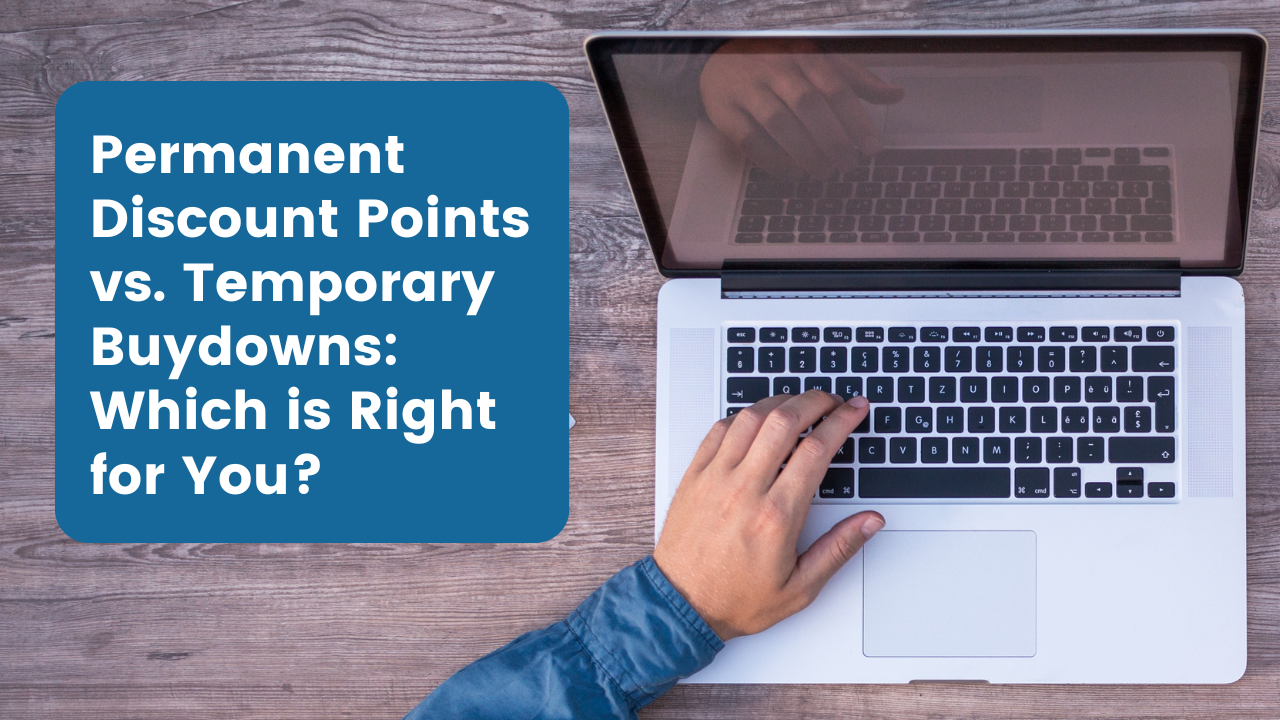Competition between lenders drives down costs and improves performance due to several key economic principles:…

Permanent Discount Points vs. Temporary Buydowns: Which is Right for You?
By Andy Harris, President of Vantage Mortgage Brokers
When shopping for a mortgage, you may come across options to lower your interest rate either permanently or temporarily. These options, known as permanent discount points and temporary buydowns, can help reduce your monthly mortgage payment, but they work in different ways. Understanding how each one functions can help you determine which strategy aligns best with your financial goals.
What Are Permanent Discount Points?
Permanent discount points, also known simply as “discount points,” are fees paid upfront to the lender in exchange for a lower interest rate for the entire life of the loan.
- Cost: One discount point typically costs 1% of the loan amount and generally reduces the interest rate by 0.25%, though this can vary.
- Benefit: The reduced rate lasts for the entire loan term, leading to long-term interest savings.
- Best for: Borrowers who plan to stay in their home long-term/not refinance in the short-term and want to lower their overall interest costs.

Example of Permanent Discount Points:
Let’s say you’re taking out a $300,000 mortgage at a 7.00% interest rate on a 30-year fixed loan.
- Without points: Monthly payment = $1,996
- With 2 points (costing $6,000), reducing the rate to 6.50%:
- New monthly payment = $1,896
- Monthly savings = $100
- Break-even period = 60 months (5 years)
- Total savings over 30 years = $36,000
If you plan to stay in the home/loan for more than five years, the permanent buy-down provides significant long-term savings.
What Is a Temporary Buydown?
A temporary buydown reduces your interest rate for the first few years of your mortgage, after which it gradually increases to the original fixed rate. The most common structures are:
- 3-2-1 buydown: Interest rate is reduced by 3% in year 1, 2% in year 2, 1% in year 3, then resets to the full rate.
- 2-1 buydown: Interest rate is reduced by 2% in year 1, 1% in year 2, then resets to the full rate.
This temporary reduction is funded by an upfront payment, usually by the seller.
Example of a 2-1 Temporary Buydown:
Using the same $300,000 mortgage at 7.00% interest:
- Year 1 (5.00% rate): Monthly payment = $1,610 (savings of $386 per month)
- Year 2 (6.00% rate): Monthly payment = $1,799 (savings of $197 per month)
- Year 3+ (7.00% rate): Monthly payment = $1,996 (full payment resumes)
Total savings over the first two years = $7,000, but after year 2, the full rate applies.
Comparing the Two Options
| Feature | Permanent Discount Points | Temporary Buydown |
| Effect | Lowers rate for the entire loan term | Lowers rate for the first 1-3 years |
| Upfront Cost | Typically 1% per point | Paid as a lump sum upfront |
| Best For | Long-term homeowners looking for lifetime savings | Buyers who expect rising income or plan to refinance |
| Break-even Period | Usually 3-7 years | Immediate short-term savings |
| Who Pays? | Borrower or Seller | Seller or Lender |
Which One Should You Choose?
- If you plan to stay in your home long-term (7+ years), permanent discount points can save you more in total interest costs if the recapture math pencils.
- If you expect to move, refinance, or need short-term relief, a temporary buydown might be the better choice.
- If you can negotiate a seller-paid buydown, a temporary buydown allows you to benefit from lower payments without using your own funds.
Final Thoughts
Both permanent discount points and temporary buydowns have their place in mortgage financing. Your choice should depend on your long-term plans, financial situation, and whether you can negotiate a seller or lender contribution. Consulting with a mortgage professional can help you weigh your options and choose the best strategy for your needs.



